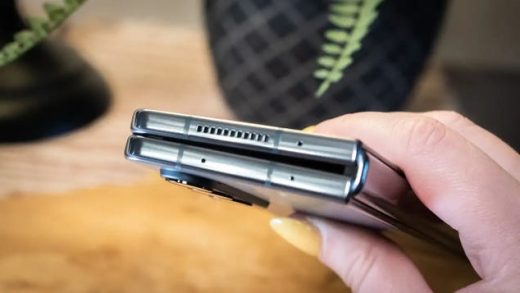Newer isn’t always better. Recently, SSD manufacturers have begun to trade off speed and reliability in the interest of cramming more storage space into their drives. Protocols like NVMe and PCIe are getting faster, but some SSDs are going backward.
QLC Flash Is The Problem
Here’s the issue. Making SSDs is expensive, and few people want to pay $200 for a 512 GB SSD when you can get “2000 GB” mechanical hard drives for less than $50. Bigger capacities sell.
SSD manufacturers are increasing storage capacities while keeping costs down—but this is bad for performance and endurance. Large SSDs may be getting cheaper, but there’s a tradeoff for each leap in SSD technology. We’re currently seeing the rise of Quad Level Cell (QLC) SSDs, which can store 4 bits of information per memory cell. QLC hasn’t replaced standard SSDs completely, but a few drives using it have made their way to the market, and they’ve got problems.
Specifically, SSD manufacturers have to find a way to fit more space into the same sized NAND flash chips (the actual data-storing part of the SSD). Traditionally, this was done with a process node shrink, making the transistors inside the flash smaller. But as Moore’s Law slows down, you’ve got to get more creative.
The ingenious solution is multi-level NAND flash. NAND flash is capable of storing a specific voltage level in a cell for an extended period. Traditional NAND flash stores two levels—on and off. This is called SLC flash, and it’s really fast. But since NAND essentially stores an analog voltage, you can represent multiple bits with slightly different voltage levels, like so:

The problem, as shown here, is that it scales up exponentially. SLC flash only requires voltage or lack thereof. MLC flash requires four voltage levels. TLC needs eight. And in the last year, QLC flash has been making a break into the market, requiring 16 separate voltage levels.
This leads to a lot of problems. As you add more voltage levels, it gets harder and harder to tell the bits apart. This makes QLC flash 25% denser than TLC but significantly slower. The read speed isn’t affected that much, but the write speed takes a dive. Most SSDs (using the newer NVMe protocol) hover around 1500 MB/s for sustained read and write (i.e., loading or copying large files). But QLC flash only manages between 80-160 MB/s for sustained writes, which is worse than a decent hard drive.
QLC SSDs Break Down Much Quicker
All SSDs generally have unfavorable write endurance compared to hard drives. Whenever you write to a cell in an SSD, it slowly wears out. Erasing a cell is supposed to rid it of electrons, but a few always stick around, causing a “0” cell to be closer to “1” over time. This gets compensated for by the controller by applying a more positive voltage over time, which is fine when you’ve got a lot of voltage room to spare. But QLC doesn’t.
SLC has an average write endurance of 100,000 program/erase cycles (write operations). MLC has between 35,000 and 10,000. TLC has around 5,000. But QLC only has a measly 1,000. This makes QLC unsuitable for frequent access drives, like your boot drive, that are written to very frequently.
Read the remaining 17 paragraphs
Source : Your Next SSD Might Be Slower (Thanks to QLC Flash)










